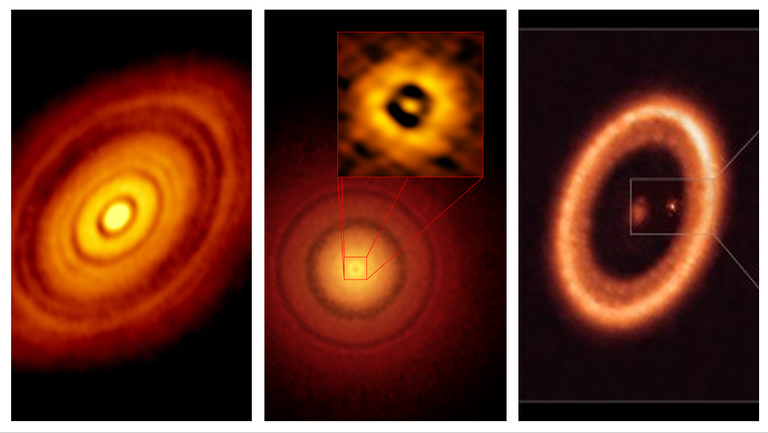Planet-Forming Disks
Thousands of planets have now been discovered around main sequence stars. The ubiquity of planets, the wide span of planetary architectures, and the diversity of planetary properties reflect the physical conditions within protoplanetary disks that surround young stars and the dynamical evolution of planetary systems. A high level goal of ALMA is to understand the formation of planets by imaging the gas and dust in these protoplanetary disks. These data can potentially inform where in the disk planets form, when they form, and how planetary systems evolve.
ALMA observations provide a number of diagnostics to investigate the formation of plants. ALMA has produced spectacular high resolution images of disks that have revealed gaps, bright rings, asymmetries, spirals, and other structures in both the gas and dust. While the exact role these structures play in the planet formation process remains under debate, the ubiquity of these structures indicates they are an important step in the planet formation process. ALMA spectral line observations provide sensitive diagnostics of the chemistry and abundance variations within disks that will impact the atmospheric composition of the gas giant planets. ALMA continuum and spectral line observations can also provide evidence for embedded planets. Continuum observations can probe circumplanetary disks, while deviations from Keplerian motion in the disk kinematics detected with spectral line observations are suggestive of embedded planets.
ALMA can also investigate how planets form by measuring how the disk demographics change with stellar age. ALMA has conducted numerous snapshot surveys of hundreds of disks in star-forming regions of different ages that measure how the continuum emission, gas content, disk sizes, and structures evolve. These surveys also probe the disk properties after the primordial disk has dissipated and dust is regenerated by the collisions of planetesimals to form “debris disks”. Sensitive ALMA imaging debris disks have identified rings and belts of dust emissions that trace the distribution of planetesimals formed from the planet formation process.

Figure: (left) ALMA dust continuum image of the disk surrounding the star HL Tau (ALMA Partnership et al. 2015, ApJ, 808, L3). (middle) ALMA observations of ringed structure and a gap at 1 AU in TW Hydra (Andrews et al. 2016 ApJ, 820, L40. (right) ALMA observations for continuum submillimeter emission from a candidate protoplanet (Benisty et al. 2021, ApJL, 916, L2)
ALMA Science Highlights
